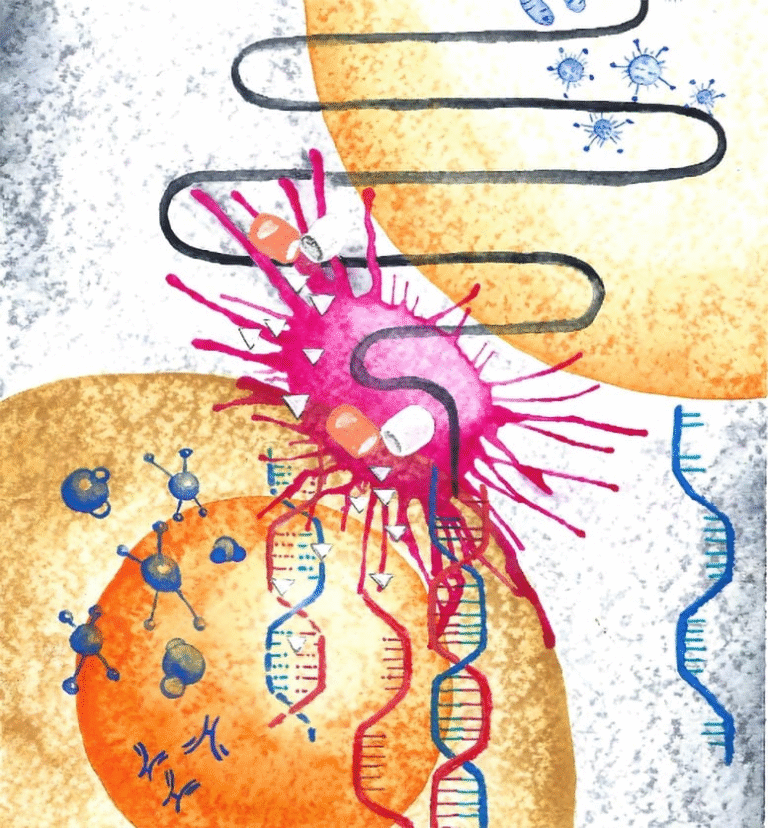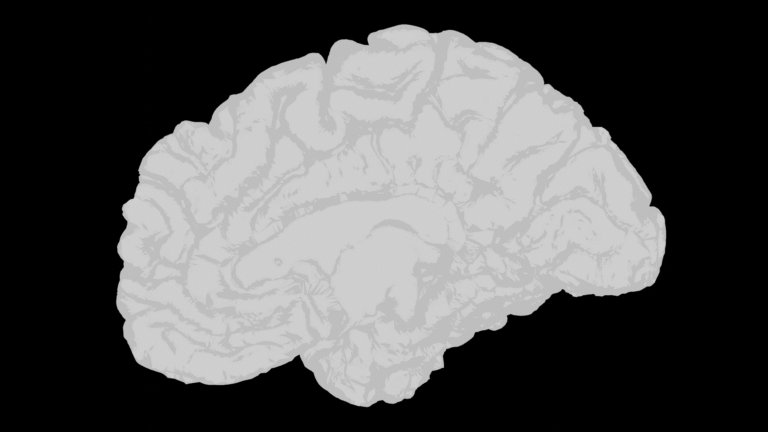How Nanomedicine and AI Could Transform the Fight Against Neurodegenerative Diseases

Neurodegenerative diseases like Alzheimer’s, Parkinson’s, and amyotrophic lateral sclerosis (ALS) continue to challenge scientists and clinicians worldwide. Despite decades of research, effective treatments that halt or reverse these conditions remain elusive. The difficulty lies in their complex nature—multiple biological failures occur simultaneously, from protein misfolding and synaptic breakdown to impaired repair mechanisms and the blood–brain barrier (BBB) that blocks most drugs from reaching the brain.
Recently, a team led by Dr. Jaison Jeevanandam at the National Institute of Mental Health (Czechia), with collaborators from Spain, the United Kingdom, and the United States, proposed a fresh and ambitious approach. Their research, published in Molecular Diagnosis & Therapy (2025), explores how nanomedicine, molecular imaging, and artificial intelligence (AI) can work together to tackle these diseases in smarter and more effective ways.
The Challenge of Treating the Brain
Before diving into what the team proposes, it’s worth understanding the key challenge—getting medicine into the brain. The BBB is a dense network of endothelial cells that protects the brain from toxins but also blocks most therapeutic compounds. Even if a drug manages to cross this barrier, it can be quickly cleared or distributed unevenly, reducing its effectiveness.
Traditional drugs for neurodegenerative diseases mostly address symptoms rather than causes. For example, existing Alzheimer’s drugs may temporarily boost neurotransmitter activity but do not stop the underlying neurodegeneration. Moreover, off-target effects can lead to toxicity elsewhere in the body. Clearly, a smarter, more targeted method is needed.
Enter Nanomedicine
Nanomedicine operates at the nanoscale—roughly a thousandth of a human hair’s width. Scientists engineer nanoparticles to carry therapeutic molecules, protect them from degradation, and deliver them precisely where needed. These tiny carriers can be customized for targeted delivery, controlled release, and enhanced bioavailability.
In neurodegenerative disease research, nanomedicine offers several advantages:
- Crossing the BBB: Certain nanoparticles can pass through biological barriers that block conventional drugs.
- Targeted Delivery: Surface modifications allow them to home in on diseased neurons.
- Controlled Release: Drugs can be released gradually or triggered by environmental cues (like pH changes).
- Reduced Toxicity: By delivering the medicine exactly where it’s needed, side effects are minimized.
However, as Dr. Jeevanandam’s team points out, engineering nanoparticles is only half the battle. Without knowing where they go inside the brain and how effectively they reach their targets, much of the effort remains a guessing game.
The Role of Molecular Imaging
This is where molecular imaging—including MRI (Magnetic Resonance Imaging) and PET (Positron Emission Tomography)—comes in. These techniques let scientists track nanomedicines in real time, visualize their distribution, and observe their biological impact.
By combining imaging with specialized contrast agents, researchers can determine:
- Whether the nanoparticles successfully crossed the BBB
- How much of the drug reached the intended brain region
- How long it remained active
- What physiological effects it produced
This imaging feedback is crucial for refining nanoparticle design. It transforms the process from trial-and-error to data-driven optimization. The imaging data, however, are often complex and massive—making AI the perfect partner.
Artificial Intelligence Joins the Equation
AI and machine learning (ML) are powerful tools for pattern recognition and prediction. In this context, AI can analyze large imaging datasets to predict nanoparticle behavior, optimize formulations, and personalize treatments for different patients.
The researchers describe a cyclical workflow: design → image → AI-driven feedback → redesign. By feeding imaging results into ML algorithms, they can identify which nanoparticle sizes, coatings, or targeting molecules yield the best outcomes. This loop significantly accelerates discovery and reduces costly animal and human trials.
The integration of AI also enables personalized optimization. For instance, AI models trained on imaging data from Alzheimer’s or Parkinson’s patients could predict how a given formulation would perform in a new patient, adjusting dosage or particle structure accordingly.
Key Insights from the Study
The review offers a comprehensive view of how these technologies can work together and what challenges still stand in the way. Here are the major takeaways:
- Multimodal Targeting: Nanocarriers must not only cross the BBB but also locate affected neurons and release their therapeutic cargo at the right moment. Imaging helps verify every step.
- Personalized Optimization: AI models trained on patient imaging data can recommend the best formulation or dose for each individual.
- Clinical Translation: To move from laboratory experiments to hospitals, clinical-grade imaging data, robust AI pipelines, and scalable manufacturing processes must be established.
- Regulatory Alignment: Therapies need to comply with safety and manufacturing regulations, which requires collaboration across scientific and industrial fields.
- Challenges Ahead: Long-term nanoparticle safety, immune responses, and the lack of shared AI-imaging datasets remain significant obstacles.
Challenges That Still Need Solving
While the prospects are exciting, the authors acknowledge several unresolved issues:
- Safety and Biocompatibility: Some nanoparticles can accumulate in tissues or trigger immune reactions over time. Long-term studies are necessary to ensure safety.
- Manufacturing and Scalability: Producing nanoparticles at clinical-grade quality and at large scale is still expensive and technically demanding.
- Data Limitations: AI systems need large, standardized imaging datasets, which are often unavailable due to privacy and variability in imaging techniques.
- Regulatory Complexity: Agencies like the FDA require clear endpoints for clinical trials. Defining imaging-based biomarkers that correlate with therapeutic success is a challenge.
- Patient Variability: Neurodegenerative diseases differ greatly between individuals, meaning no single nanoparticle design will suit everyone.
Despite these hurdles, the team believes that the foundation is already strong enough to justify deeper interdisciplinary collaboration.
Practical Applications and Next Steps
Dr. Jeevanandam’s group is developing molecular nanorobots—smart nano-formulations that can be administered as a nasal spray, a non-invasive route that bypasses the BBB more easily. Alongside this, they are designing ML models to predict optimal dosage for each patient.
Their AI models are being trained on MRI and PET imaging datasets from patients with Alzheimer’s and Parkinson’s disease to fine-tune nanoparticle delivery parameters. At the same time, the researchers are partnering with clinicians to define imaging markers suitable for regulatory approval.
The overall goal is to establish an iterative, data-driven treatment framework, where imaging and AI continuously inform how nanomedicine is designed, delivered, and adjusted.
Broader Impact on Medicine
If successful, this approach could redefine how brain diseases are treated. Instead of managing symptoms, therapies could be adapted in real time based on imaging data, much like adjusting a musical instrument until it’s in perfect tune.
Imagine this future scenario: a patient diagnosed early with Alzheimer’s receives a nanomedicine infusion. An MRI scan immediately reveals how well the drug reached the target areas. AI analyzes the results, suggests a dosage adjustment, and the next treatment is fine-tuned for optimal effect. This is the kind of precision medicine the field is moving toward.
For patients, that could mean slower disease progression, better cognitive outcomes, and fewer side effects. For scientists, it opens a new era of interdisciplinary collaboration, bringing together materials science, imaging, AI, and clinical practice.
The Bigger Picture: What Is Nanomedicine Exactly?
To appreciate the innovation here, it’s worth understanding the basics of nanomedicine. Nanomedicine involves using nanometer-sized materials (typically 1–100 nm) for diagnosis, monitoring, and therapy. Common examples include liposomes, polymeric nanoparticles, metal-oxide nanoparticles, and quantum dots.
Key properties that make them special include:
- High surface area: Enables efficient drug loading and functionalization.
- Customizable surfaces: Can be coated with ligands that bind specific cell types.
- Stimuli-responsive release: Some nanoparticles release their contents in response to temperature, pH, or enzyme activity.
- Imaging capability: Certain nanoparticles can double as imaging contrast agents, merging therapy and diagnosis—a concept known as theranostics.
In neurodegenerative diseases, this is particularly valuable because the brain’s protective environment requires precision targeting and minimal invasiveness.
How AI Amplifies Medical Innovation
AI in healthcare extends far beyond nanomedicine. Machine learning models are already being used to:
- Detect early signs of Alzheimer’s from brain scans
- Predict disease progression from speech or gait patterns
- Assist radiologists by identifying subtle image changes invisible to the human eye
When combined with nanotechnology, AI transitions from a diagnostic tool to a design and control mechanism—helping create smarter nanoparticles and ensuring their success once inside the body.
The collaboration between these two domains—AI and nanomedicine—represents a step toward adaptive, personalized medicine where therapy evolves with the patient’s condition.
A Glimpse Into the Future
The integration of nanomedicine, molecular imaging, and AI might sound futuristic, but all the building blocks already exist. Researchers worldwide are now exploring similar approaches for cancer, stroke, and metabolic diseases. What sets this neurodegenerative study apart is its system-level integration—linking particle engineering, imaging validation, AI optimization, and clinical translation.
If researchers can overcome the remaining hurdles—safety, scalability, and data sharing—patients could one day benefit from truly personalized nanomedicine-based therapies. The brain, long considered unreachable by most drugs, may finally become accessible through this intelligent alliance of disciplines.
Research Reference:
Jaison Jeevanandam et al. (2025). Smart Nanomedicines for Neurodegenerative Diseases: Empowering New Therapies with Molecular Imaging and Artificial Intelligence. Molecular Diagnosis & Therapy. https://doi.org/10.1007/s40291-025-00813-6





